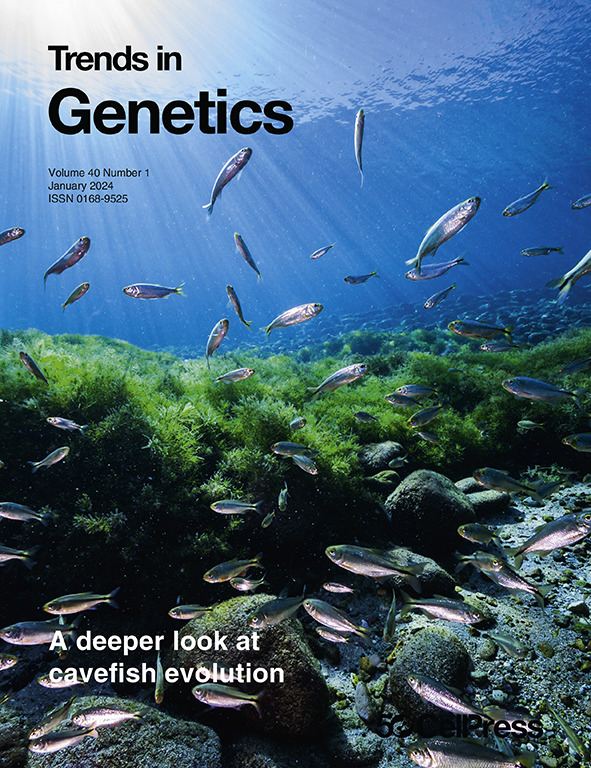Force-free activation of Notch with DNA origami.
IF 13.6
2区 生物学
Q1 GENETICS & HEREDITY
引用次数: 0
Abstract
The Notch signaling pathway is a highly conserved, fundamental process to embryogenesis and neurogenesis. While force-induced conformational change is known to activate Notch receptors, Smyrlaki et al. recently used DNA origami to reveal an additional, force-independent mode of Notch activation via soluble presentation of spatially controlled ligand nanopatterns.
利用 DNA 折纸无力激活 Notch。
Notch信号通路是一种高度保守的胚胎发生和神经发生的基本过程。众所周知,力诱导的构象变化可激活 Notch 受体,而 Smyrlaki 等人最近利用 DNA 折纸揭示了另一种不依赖于力的 Notch 激活模式,即通过空间控制配体纳米图案的可溶性呈现来激活 Notch。
本文章由计算机程序翻译,如有差异,请以英文原文为准。
求助全文
约1分钟内获得全文
求助全文
来源期刊

Trends in Genetics
生物-遗传学
CiteScore
20.90
自引率
0.90%
发文量
160
审稿时长
6-12 weeks
期刊介绍:
Launched in 1985, Trends in Genetics swiftly established itself as a "must-read" for geneticists, offering concise, accessible articles covering a spectrum of topics from developmental biology to evolution. This reputation endures, making TiG a cherished resource in the genetic research community. While evolving with the field, the journal now embraces new areas like genomics, epigenetics, and computational genetics, alongside its continued coverage of traditional subjects such as transcriptional regulation, population genetics, and chromosome biology.
Despite expanding its scope, the core objective of TiG remains steadfast: to furnish researchers and students with high-quality, innovative reviews, commentaries, and discussions, fostering an appreciation for advances in genetic research. Each issue of TiG presents lively and up-to-date Reviews and Opinions, alongside shorter articles like Science & Society and Spotlight pieces. Invited from leading researchers, Reviews objectively chronicle recent developments, Opinions provide a forum for debate and hypothesis, and shorter articles explore the intersection of genetics with science and policy, as well as emerging ideas in the field. All articles undergo rigorous peer-review.
 求助内容:
求助内容: 应助结果提醒方式:
应助结果提醒方式:


